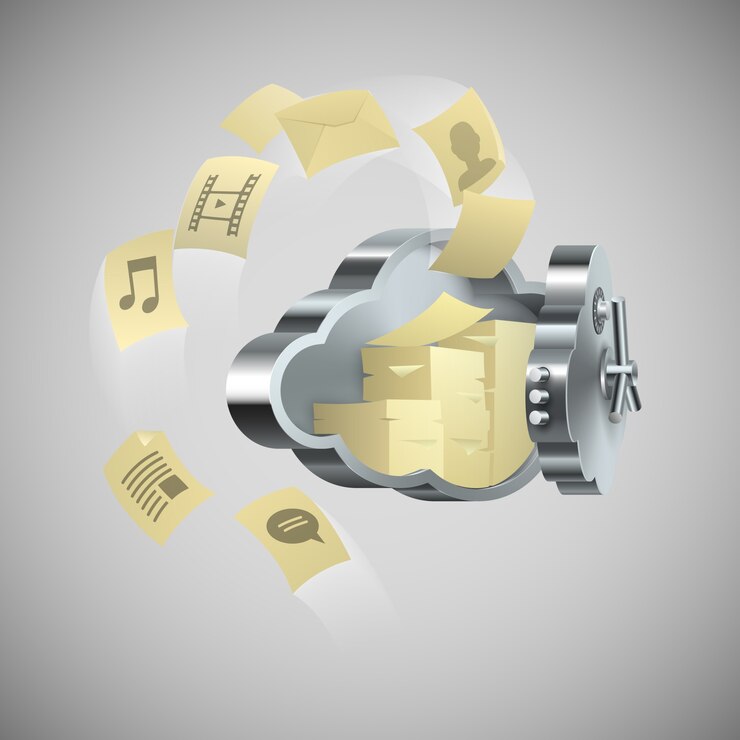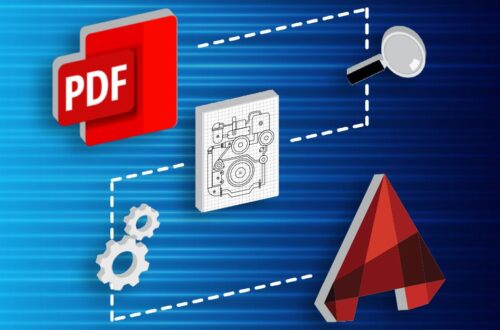
Converting CAD files in the cloud
In the dynamic realm of design, the cloud has emerged as a game-changer. Converting CAD files in the cloud opens doors to unprecedented efficiency and collaboration. This article unravels the intricacies, advantages, and practical steps, ensuring you harness the full potential of cloud-based CAD file conversion.
Popular Cloud Platforms
Leading the charge are cloud platforms tailored for CAD needs. Autodesk Fusion 360, Onshape, and SOLIDWORKS on the cloud offer comprehensive suites, integrating design, simulation, and manufacturing. Choosing the right platform is pivotal, as it determines the features, integrations, and collaborative possibilities at your fingertips.
Step-by-Step Cloud Conversion
Embarking on the journey of cloud conversion for your CAD files is a systematic process that ensures a seamless transition to a more efficient and collaborative design environment. Below is a detailed guide on the step-by-step procedure:
- Select a Reliable Cloud Platform: Begin by choosing a cloud platform that aligns with your specific CAD conversion needs. Popular platforms like Autodesk Fusion 360, Onshape, and SOLIDWORKS on the cloud offer comprehensive features and a user-friendly interface.
- Upload Your CAD Files: Once you’ve chosen a platform, the next step is to upload your existing CAD files to the cloud. This process typically involves a straightforward upload interface, allowing you to transfer your designs securely.
- Choose Output Formats: Cloud platforms often provide flexibility in selecting desired output formats for your converted CAD files. Whether it’s a specific file type or compatibility with other design tools, choose the formats that suit your project requirements.
- Initiate the Conversion Process: With your files uploaded and output formats selected, initiate the conversion process. This step is usually automated within the cloud platform, ensuring a quick and efficient transformation of your CAD files.
- Verify and Review: After the conversion is complete, it’s essential to verify the output. Cloud platforms often include tools for reviewing the converted files, ensuring accuracy and preserving the integrity of your designs.
- Collaborate in Real-time: Leverage the collaborative features of cloud platforms to work on your designs in real-time. Share access with team members, enabling seamless collaboration, edits, and updates.
- Utilize Version Control: Cloud-based CAD conversion often includes robust version control features. Keep track of changes, revisions, and updates to your designs, ensuring a cohesive workflow within a collaborative team environment.
- Regular Backups and Maintenance: Implement a routine for regular backups and maintenance of your CAD files in the cloud. This precautionary measure ensures data integrity and provides a safety net in case of unexpected issues.
Cloud vs. Traditional Conversion
The choice between cloud-based and traditional CAD file conversion is pivotal. Here, we delve into a comparative analysis, highlighting the transformative aspects of each approach.
| Features | Cloud Conversion | Traditional Conversion |
| Accessibility | Unparalleled access from anywhere, fostering global teamwork | Localized access requiring powerful hardware and specific software installations |
| Collaboration | Real-time collaboration, shared access, and seamless edits | Limited collaboration, file sharing complexities, and version control challenges |
| Processing Speed | Rapid processing, leveraging the cloud’s scalable resources | Dependent on local hardware capabilities, potentially slower processing times |
| Security | Advanced encryption, regular audits, and robust access controls | Relies heavily on local security measures, potential vulnerabilities in case of system breaches |
| Cost Efficiency | Cost-effective with pay-as-you-go models and reduced hardware investments | High upfront costs for powerful hardware, ongoing maintenance expenses |
| Scalability | Easily scalable to accommodate project growth | Limited scalability, potential need for hardware upgrades with project expansion |
| Learning Curve | User-friendly interfaces, ease of adoption for beginners | Steeper learning curve, requires expertise in maintaining and upgrading local systems |
| Integration | Seamless integration with other cloud-based tools and software | Limited integration possibilities, potential software compatibility issues |
| Flexibility | Adaptable to various project sizes and dynamic work environments | Less adaptable, often tailored to specific project requirements |
| Maintenance | Cloud providers handle maintenance tasks, reducing the burden on users | Users are responsible for system maintenance, updates, and backups |
Challenges and Solutions
The process of CAD file conversion, whether in the cloud or through traditional methods, comes with its set of challenges. Addressing these challenges is essential to ensure a seamless transition and maximize the benefits of advanced design technologies.
| Challenges | Solutions | Best Practices |
| Data Security Concerns | Implement robust encryption, multi-factor authentication, and regular audits to safeguard intellectual property. | Choose reputable cloud providers with a proven track record in data security. Regularly update access credentials and permissions. |
| Learning Curves for New Technologies | Provide comprehensive training programs for users transitioning to cloud-based conversion. Offer user-friendly interfaces to ease the learning process. | Encourage continuous learning and offer ongoing support. Leverage tutorials and user guides to facilitate familiarity with new technologies. |
| Technical Glitches and Downtime | Establish contingency plans for potential downtime. Regularly update and maintain both local and cloud systems to prevent technical glitches. | Conduct regular system checks and implement redundant measures to minimize the impact of technical issues. Have a responsive support team available for troubleshooting. |
| File Compatibility Issues | Choose cloud platforms that support a wide range of file formats. Prioritize standard file formats for compatibility across different tools. | Regularly update software versions to ensure compatibility. Convert files to standard formats before sharing or collaborating across different platforms. |
| Limited Collaboration in Traditional Methods | Introduce collaborative tools and practices within traditional methods. Establish clear communication channels to overcome collaboration limitations. | Emphasize the importance of effective communication and adopt project management tools that facilitate collaboration in traditional workflows. |
| Upfront Costs and Budget Constraints | Leverage cloud platforms with flexible pricing models, such as pay-as-you-go. Consider long-term cost savings and efficiency gains. | Conduct a thorough cost-benefit analysis before adopting any conversion method. Allocate budgets for necessary hardware upgrades in traditional methods. |
| Resistance to Change | Foster a culture of innovation and communicate the benefits of the chosen conversion method. Address concerns through open dialogue and showcase success stories. | Involve key stakeholders in decision-making processes. Highlight the positive impact on workflow efficiency and project outcomes. |
FAQs
Q: Can I convert CAD files in the cloud without an internet connection? Absolutely! Most cloud platforms offer offline capabilities, allowing you to work on your designs even when disconnected. However, regular internet access is recommended for seamless collaboration and updates.
Q: Are my designs secure in the cloud? Yes, cloud providers prioritize security. Robust encryption, access controls, and regular audits ensure the protection of your intellectual property. Choose reputable platforms with a proven track record for added peace of mind.
Q: How does cloud conversion impact collaboration? Cloud conversion enhances collaboration by providing a centralized platform accessible to all team members. Real-time updates, version control, and collaborative editing redefine teamwork in the design process.
Q: Can I use the cloud for large-scale projects? Absolutely. Cloud platforms are designed to scale with your projects. Whether you’re working on a small prototype or a large-scale production, the cloud adapts to your needs seamlessly.
Q: Are there any free cloud-based CAD conversion platforms? Yes, some platforms offer free versions with limited features. However, for professional-grade functionalities and extensive collaboration options, opting for premium plans is advisable.
Q: How do I choose the right cloud platform for CAD conversion? Consider factors such as features, integrations, user interface, and collaboration capabilities. Trial versions, user reviews, and recommendations from peers can guide you in making an informed decision.





